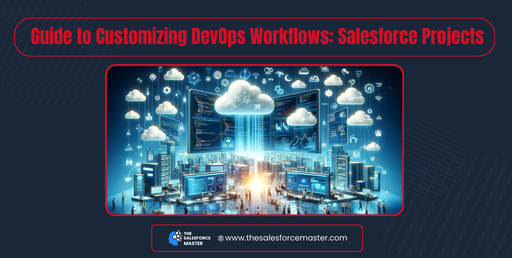
A Guide to Customizing DevOps Workflows: Salesforce Projects
Customizing DevOps workflows is essential for optimizing Salesforce projects. Effective workflows enhance productivity, ensure seamless integration, and foster collaboration. This guide explores actionable strategies for tailoring DevOps workflows to meet Salesforce project requirements while utilizing Salesforce Login and essential Salesforce Marketer practices.
Understanding the Basics of DevOps in Salesforce
DevOps in Salesforce combines development and operations to streamline project delivery. It emphasizes automation, collaboration, and iterative improvement. However, customizing these workflows ensures alignment with Salesforce’s specific tools, such as Salesforce Login, and project objectives.
- Automate Repetitive Tasks: Incorporate Continuous Integration and Continuous Deployment (CI/CD) pipelines to automate deployments. Tools like Jenkins or GitLab integrate seamlessly with Salesforce environments, ensuring efficient operations.
- Enable Salesforce-Specific Tools: Utilize Salesforce DX for development and version control. It simplifies deployment, enhances code management, and supports collaborative teamwork.
- Leverage Salesforce Login for Security: Salesforce Login ensures secure access control during deployments. Implement single sign-on (SSO) or multi-factor authentication (MFA) to bolster your workflow’s security.

Key Customization Strategies for DevOps Workflows
Tailoring DevOps workflows for Salesforce involves integrating specific features that align with your project goals. Consider these strategies:
1. Adopt Salesforce Marketer’s Best Practices
- Personalized Data Integration: Customize workflows to synchronize marketing data using tools like Marketing Cloud.
- Real-Time Reporting: Implement dashboards for real-time monitoring, enabling agile decision-making.
- Campaign Automation: Automate marketing campaigns by integrating them into your CI/CD pipelines.
2. Optimize for Continuous Improvement
- Feedback Loops: Include testing feedback in workflows to ensure high-quality releases. Tools like Selenium or Provar enhance Salesforce testing.
- Monitor Workflow Performance: Use Salesforce’s built-in analytics tools for tracking deployment performance and spotting inefficiencies.
3. Ensure Seamless User Experiences
- Unified User Access: Configure Salesforce Login to streamline developer and admin access. A unified system simplifies transitions between environments.
- User-Centric Customizations: Incorporate features that resonate with Salesforce users, such as marketing campaign alignment and predictive insights.
Maximizing Success with Salesforce Marketer Techniques
To fully benefit from your customized workflows, include Salesforce Marketer’s techniques:
- Marketing Campaign Optimization: Align DevOps workflows to incorporate marketing automation, improving engagement metrics.
- Data-Driven Insights: Integrate Salesforce’s AI tools to personalize marketing campaigns and analyze customer behaviors.
- Scalable Architectures: Design workflows that adapt to project scalability demands, ensuring efficiency during growth phases.
- Enhanced Collaboration: Foster collaboration between marketing and development teams for cohesive project execution.
Conclusion
Customizing DevOps workflows for Salesforce projects requires a strategic approach. By leveraging Salesforce Login, adopting Salesforce Marketer practices, and optimizing for automation, you can ensure secure, efficient, and scalable operations. Embracing these techniques will help you drive project success and deliver enhanced value to stakeholders.



